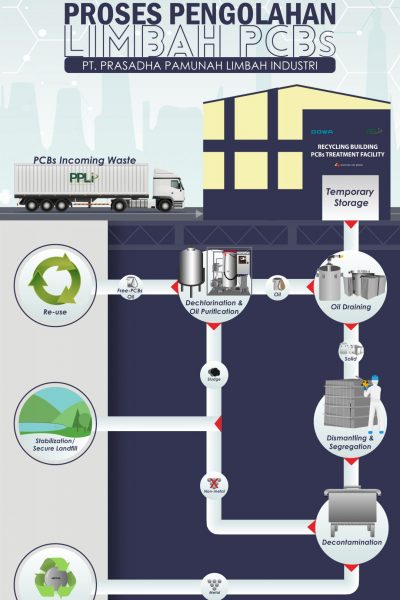
You should know
Do you know how PT. Prasadha Pamunah Limbah Industri (PPLI) treats PCBs waste?
The PCBs treatment facility at PPLI is built and engineered in accordance with international standards that have been set by the United Nations Industrial Development Organization (UNIDO) to treat PCBs waste by dehalogenation/ dechlorination.
The first step after PCBs waste arrives at PPLI is to store it in a temporary storage area before being treated. Furthermore, PCBs waste will be moved to the oil pumping area (oil draining) to release the oil into the storage tank. Empty transformers and/ or capacitors will be disassembled and separated into several types of materials such as metal casings, copper, iron, ceramics, plastics and paper. The results of this unloading will be processed in the decontamination unit, while the PCBs-containing oil will be processed in the dehalogenation/ dechlorination unit. The decontamination treatment is the process of removing residue (PCBs-containing oil) on the material using solvent steam and the results of this decontamination can be recycled. As for material that cannot be recycled, it will be treated in a stabilization facility and disposed in landfill.
The dehalogenation/ dechlorination treatment is the process of breaking the bonds of chlorine atoms in PCBs using alkaline metals, so that the PCBs content in the oil is no longer existed (PCBs-free oil). This reaction will produce sludge as a byproduct and will be treated in a stabilization facility and disposed in landfill. Furthermore, PCBs-free oil resulting from dehalogenation/ dechlorination process will be treated in the oil regeneration and purification unit. The PCBs-free oil will be purified through a dehydration process to reduce water content and degassing to remove dissolved gases. After the process is complete, the PCBs free oil is ready to be used again. (atp)

